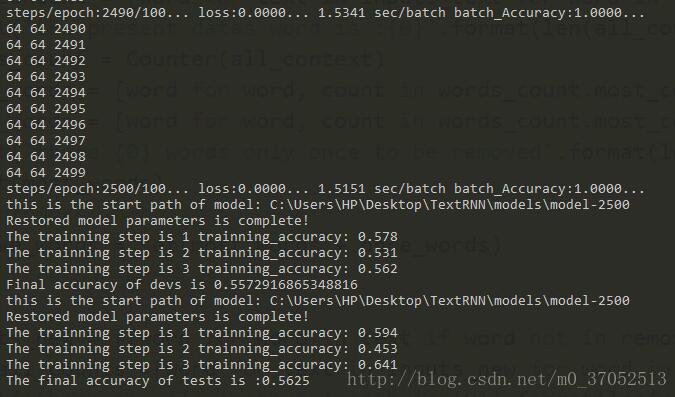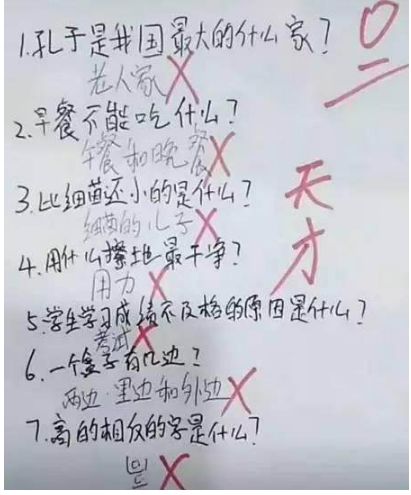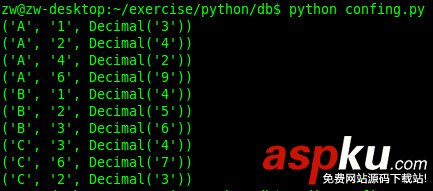本文实例为大家分享了使用RNN进行文本分类,python代码实现,供大家参考,具体内容如下
1、本博客项目由来是oxford 的nlp 深度学习课程第三周作业,作业要求使用LSTM进行文本分类。和上一篇CNN文本分类类似,本此代码风格也是仿照sklearn风格,三步走形式(模型实体化,模型训练和模型预测)但因为训练时间较久不知道什么时候训练比较理想,因此在次基础上加入了继续训练的功能。
2、构造文本分类的rnn类,(保存文件为ClassifierRNN.py)
2.1 相应配置参数因为较为繁琐,不利于阅读,因此仿照tensorflow源码形式,将代码分成 网络配置参数 nn_config 和计算配置参数: calc_config,也相应声明了其对应的类:NN_config,CALC_config。
2.2 声明 ClassifierRNN类,该类的主要函数有:(init, build_inputs, build_rnns, build_loss, build_optimizer, random_batches,fit, load_model, predict_accuracy, predict),代码如下:
import tensorflow as tfimport numpy as npimport matplotlib.pyplot as pltimport osimport timeclass NN_config(object): def __init__(self,num_seqs=1000,num_steps=10,num_units=128,num_classes = 8,/ num_layers = 1,embedding_size=100,vocab_size = 10000,/ use_embeddings=False,embedding_init=None): self.num_seqs = num_seqs self.num_steps = num_steps self.num_units = num_units self.num_classes = num_classes self.num_layers = num_layers self.vocab_size = vocab_size self.embedding_size = embedding_size self.use_embeddings = use_embeddings self.embedding_init = embedding_initclass CALC_config(object): def __init__(self,batch_size=64,num_epoches = 20,learning_rate = 1.0e-3, / keep_prob=0.5,show_every_steps = 10,save_every_steps=100): self.batch_size = batch_size self.num_epoches = num_epoches self.learning_rate = learning_rate self.keep_prob = keep_prob self.show_every_steps = show_every_steps self.save_every_steps = save_every_stepsclass ClassifierRNN(object): def __init__(self, nn_config, calc_config): # assign revalent parameters self.num_seqs = nn_config.num_seqs self.num_steps = nn_config.num_steps self.num_units = nn_config.num_units self.num_layers = nn_config.num_layers self.num_classes = nn_config.num_classes self.embedding_size = nn_config.embedding_size self.vocab_size = nn_config.vocab_size self.use_embeddings = nn_config.use_embeddings self.embedding_init = nn_config.embedding_init # assign calc ravalant values self.batch_size = calc_config.batch_size self.num_epoches = calc_config.num_epoches self.learning_rate = calc_config.learning_rate self.train_keep_prob= calc_config.keep_prob self.show_every_steps = calc_config.show_every_steps self.save_every_steps = calc_config.save_every_steps # create networks models tf.reset_default_graph() self.build_inputs() self.build_rnns() self.build_loss() self.build_optimizer() self.saver = tf.train.Saver() def build_inputs(self): with tf.name_scope('inputs'): self.inputs = tf.placeholder(tf.int32, shape=[None,self.num_seqs],/ name='inputs') self.targets = tf.placeholder(tf.int32, shape=[None, self.num_classes],/ name='classes') self.keep_prob = tf.placeholder(tf.float32,name='keep_prob') self.embedding_ph = tf.placeholder(tf.float32, name='embedding_ph') if self.use_embeddings == False: self.embeddings = tf.Variable(tf.random_uniform([self.vocab_size,/ self.embedding_size],-0.1,0.1),name='embedding_flase') self.rnn_inputs = tf.nn.embedding_lookup(self.embeddings,self.inputs) else: embeddings = tf.Variable(tf.constant(0.0,shape=[self.vocab_size,self.embedding_size]),/ trainable=False,name='embeddings_true') self.embeddings = embeddings.assign(self.embedding_ph) self.rnn_inputs = tf.nn.embedding_lookup(self.embeddings,self.inputs) print('self.rnn_inputs.shape:',self.rnn_inputs.shape) def build_rnns(self): def get_a_cell(num_units,keep_prob): rnn_cell = tf.contrib.rnn.BasicLSTMCell(num_units=num_units) drop = tf.contrib.rnn.DropoutWrapper(rnn_cell, output_keep_prob=keep_prob) return drop with tf.name_scope('rnns'): self.cell = tf.contrib.rnn.MultiRNNCell([get_a_cell(self.num_units,self.keep_prob) for _ in range(self.num_layers)]) self.initial_state = self.cell.zero_state(self.batch_size,tf.float32) self.outputs, self.final_state = tf.nn.dynamic_rnn(self.cell,tf.cast(self.rnn_inputs,tf.float32),/ initial_state = self.initial_state ) print('rnn_outputs',self.outputs.shape) def build_loss(self): with tf.name_scope('loss'): self.logits = tf.contrib.layers.fully_connected(inputs = tf.reduce_mean(self.outputs, axis=1), / num_outputs = self.num_classes, activation_fn = None) print('self.logits.shape:',self.logits.shape) self.cost = tf.reduce_mean(tf.nn.softmax_cross_entropy_with_logits(logits=self.logits,/ labels = self.targets)) print('self.cost.shape',self.cost.shape) self.predictions = self.logits self.correct_predictions = tf.equal(tf.argmax(self.predictions, axis=1), tf.argmax(self.targets, axis=1)) self.accuracy = tf.reduce_mean(tf.cast(self.correct_predictions,tf.float32)) print(self.cost.shape) print(self.correct_predictions.shape) def build_optimizer(self): with tf.name_scope('optimizer'): self.optimizer = tf.train.AdamOptimizer(self.learning_rate).minimize(self.cost) def random_batches(self,data,shuffle=True): data = np.array(data) data_size = len(data) num_batches_per_epoch = int(data_size/self.batch_size) #del data for epoch in range(self.num_epoches): if shuffle : shuffle_index = np.random.permutation(np.arange(data_size)) shuffled_data = data[shuffle_index] else: shuffled_data = data for batch_num in range(num_batches_per_epoch): start = batch_num * self.batch_size end = min(start + self.batch_size,data_size) yield shuffled_data[start:end] def fit(self,data,restart=False): if restart : self.load_model() else: self.session = tf.Session() self.session.run(tf.global_variables_initializer()) with self.session as sess: step = 0 accuracy_list = [] # model saving save_path = os.path.abspath(os.path.join(os.path.curdir, 'models')) if not os.path.exists(save_path): os.makedirs(save_path) plt.ion() #new_state = sess.run(self.initial_state) new_state = sess.run(self.initial_state) batches = self.random_batches(data) for batch in batches: x,y = zip(*batch) x = np.array(x) y = np.array(y) print(len(x),len(y),step) step += 1 start = time.time() if self.use_embeddings == False: feed = {self.inputs :x, self.targets:y, self.keep_prob : self.train_keep_prob, self.initial_state: new_state} else: feed = {self.inputs :x, self.targets:y, self.keep_prob : self.train_keep_prob, self.initial_state: new_state, self.embedding_ph: self.embedding_init} batch_loss, new_state, batch_accuracy , _ = sess.run([self.cost,self.final_state,/ self.accuracy, self.optimizer],feed_dict = feed) end = time.time() accuracy_list.append(batch_accuracy) # control the print lines if step%self.show_every_steps == 0: print('steps/epoch:{}/{}...'.format(step,self.num_epoches), 'loss:{:.4f}...'.format(batch_loss), '{:.4f} sec/batch'.format((end - start)), 'batch_Accuracy:{:.4f}...'.format(batch_accuracy) ) plt.plot(accuracy_list) plt.pause(0.5) if step%self.save_every_steps == 0: self.saver.save(sess,os.path.join(save_path, 'model') ,global_step = step) self.saver.save(sess, os.path.join(save_path, 'model'), global_step=step) def load_model(self, start_path=None): if start_path == None: model_path = os.path.abspath(os.path.join(os.path.curdir,"models")) ckpt = tf.train.get_checkpoint_state(model_path) path = ckpt.model_checkpoint_path print("this is the start path of model:",path) self.session = tf.Session() self.saver.restore(self.session, path) print("Restored model parameters is complete!") else: self.session = tf.Session() self.saver.restore(self.session,start_path) print("Restored model parameters is complete!") def predict_accuracy(self,data,test=True): # loading_model self.load_model() sess = self.session iterations = 0 accuracy_list = [] predictions = [] epoch_temp = self.num_epoches self.num_epoches = 1 batches = self.random_batches(data,shuffle=False) for batch in batches: iterations += 1 x_inputs, y_inputs = zip(*batch) x_inputs = np.array(x_inputs) y_inputs = np.array(y_inputs) if self.use_embeddings == False: feed = {self.inputs: x_inputs, self.targets: y_inputs, self.keep_prob: 1.0} else: feed = {self.inputs: x_inputs, self.targets: y_inputs, self.keep_prob: 1.0, self.embedding_ph: self.embedding_init} to_train = [self.cost, self.final_state, self.predictions,self.accuracy] batch_loss,new_state,batch_pred,batch_accuracy = sess.run(to_train, feed_dict = feed) accuracy_list.append(np.mean(batch_accuracy)) predictions.append(batch_pred) print('The trainning step is {0}'.format(iterations),/ 'trainning_accuracy: {:.3f}'.format(accuracy_list[-1])) accuracy = np.mean(accuracy_list) predictions = [list(pred) for pred in predictions] predictions = [p for pred in predictions for p in pred] predictions = np.array(predictions) self.num_epoches = epoch_temp if test : return predictions, accuracy else: return accuracy def predict(self, data): # load_model self.load_model() sess = self.session iterations = 0 predictionss = [] epoch_temp = self.num_epoches self.num_epoches = 1 batches = self.random_batches(data) for batch in batches: x_inputs = batch if self.use_embeddings == False: feed = {self.inputs : x_inputs, self.keep_prob:1.0} else: feed = {self.inputs : x_inputs, self.keep_prob:1.0, self.embedding_ph: self.embedding_init} batch_pred = sess.run([self.predictions],feed_dict=feed) predictions.append(batch_pred) predictions = [list(pred) for pred in predictions] predictions = [p for pred in predictions for p in pred] predictions = np.array(predictions) return predictions 3、 进行模型数据的导入以及处理和模型训练,集中在一个处理文件中(sampling_trainning.py)
相应代码如下:
ps:在下面文档用用到glove的文档,这个可网上搜索进行相应的下载,下载后需要将glove对应的生成格式转化成word2vec对应的格式,就是在文件头步加入一行 两个整数(字典的数目和嵌入的特征长度),也可用python库自带的转化工具,网上进行相应使用方法的搜索便可。
import numpy as npimport osimport timeimport matplotlib.pyplot as pltimport tensorflow as tfimport reimport urllib.requestimport zipfileimport lxml.etreefrom collections import Counterfrom random import shufflefrom gensim.models import KeyedVectors# Download the dataset if it's not already thereif not os.path.isfile('ted_en-20160408.zip'): urllib.request.urlretrieve("https://wit3.fbk.eu/get.php?path=XML_releases/xml/ted_en-20160408.zip&filename=ted_en-20160408.zip", filename="ted_en-20160408.zip")# extract both the texts and the labels from the xml filewith zipfile.ZipFile('ted_en-20160408.zip', 'r') as z: doc = lxml.etree.parse(z.open('ted_en-20160408.xml', 'r'))texts = doc.xpath('//content/text()')labels = doc.xpath('//head/keywords/text()')del docprint("There are {} input texts, each a long string with text and punctuation.".format(len(texts)))print("")print(texts[0][:100])# method remove unused words and labelsinputs_text = [ re.sub(r'/([^)]*/)',' ', text) for text in texts]inputs_text = [re.sub(r':', ' ', text) for text in inputs_text]#inputs_text = [text.split() for text in inputs_text]print(inputs_text[0][0:100])inputs_text = [ text.lower() for text in texts]inputs_text = [ re.sub(r'([^a-z0-9/s])', r' </1_token> ',text) for text in inputs_text]#input_texts = [re.sub(r'([^a-z0-9/s])', r' </1_token> ', input_text) for input_text in input_texts]inputs_text = [text.split() for text in inputs_text]print(inputs_text[0][0:100])# label processionlabel_lookup = ['ooo','Too','oEo','ooD','TEo','ToD','oED','TED']new_label = []for i in range(len(labels)): labels_pre = ['o','o','o'] label = labels[i].split(', ') #print(label,i) if 'technology' in label: labels_pre[0] = 'T' if 'entertainment' in label: labels_pre[1] = 'E' if 'design' in label: labels_pre[2] = 'D' labels_temp = ''.join(labels_pre) label_index = label_lookup.index(labels_temp) new_label.append(label_index)print('the length of labels:{0}'.format(len(new_label)))print(new_label[0:50])labels_index = np.zeros((len(new_label),8))#for i in range(labels_index.shape[0]):# labels_index[i,new_label[i]] = 1labels_index[range(len(new_label)),new_label] = 1.0print(labels_index[0:10])# feature selectionsunions = list(zip(inputs_text,labels_index))unions = [union for union in unions if len(union[0]) >300]print(len(unions))inputs_text, labels_index = zip(*unions)inputs_text = list(inputs_text)labels = list(labels_index)print(inputs_text[0][0:50])print(labels_index[0:10])# feature filtteringall_context = [word for text in inputs_text for word in text]print('the present datas word is :{0}'.format(len(all_context)))words_count = Counter(all_context)most_words = [word for word, count in words_count.most_common(50)]once_words = [word for word, count in words_count.most_common() if count == 1]print('there {0} words only once to be removed'.format(len(once_words)))print(most_words)#print(once_words)remove_words = set(most_words + once_words)#print(remove_words)inputs_new = [[word for word in text if word not in remove_words] for text in inputs_text]new_all_counts =[word for text in inputs_new for word in text]print('there new all context length is:{0}'.format(len(new_all_counts)))# word2index and index2word processingswords_voca = set([word for text in inputs_new for word in text])word2index = {}index2word = {}for i, word in enumerate(words_voca): word2index[word] = i index2word[i] = wordinputs_index = []for text in inputs_new: inputs_index.append([word2index[word] for word in text])print(len(inputs_index))print(inputs_index[0][0:100])model_glove = KeyedVectors.load_word2vec_format('glove.6B.300d.txt', binary=False)n_features = 300embeddings = np.random.uniform(-0.1,0.1,(len(word2index),n_features))inwords = 0for word in words_voca: if word in model_glove.vocab: inwords += 1 embeddings[word2index[word]] = model_glove[word]print('there {} words in model_glove'.format(inwords))print('The voca_word in presents text is:{0}'.format(len(words_voca)))print('the precentage of words in glove is:{0}'.format(np.float(inwords)/len(words_voca)))# truncate the sequence lengthmax_length = 1000inputs_concat = []for text in inputs_index: if len(text)>max_length: inputs_concat.append(text[0:max_length]) else: inputs_concat.append(text + [0]*(max_length-len(text)))print(len(inputs_concat))inputs_index = inputs_concatprint(len(inputs_index))# sampling the train data use category samplingnum_class = 8label_unions = list(zip(inputs_index,labels_index))print(len(label_unions))trains = []devs = []tests = []for c in range(num_class): type_sample = [union for union in label_unions if np.argmax(union[1]) == c] print('the length of this type length',len(type_sample),c) shuffle(type_sample) num_all = len(type_sample) num_train = int(num_all*0.8) num_dev = int(num_all*0.9) trains.extend(type_sample[0:num_train]) devs.extend(type_sample[num_train:num_dev]) tests.extend(type_sample[num_dev:num_all])shuffle(trains)shuffle(devs)shuffle(tests)print('the length of trains is:{0}'.format(len(trains)))print('the length of devs is:{0}'.format(len(devs)))print('the length of tests is:{0}'.format(len(tests)))#--------------------------------------------------------------------#------------------------ model processing --------------------------#--------------------------------------------------------------------from ClassifierRNN import NN_config,CALC_config,ClassifierRNN# parameters used by rnnsnum_layers = 1num_units = 60num_seqs = 1000step_length = 10num_steps = int(num_seqs/step_length)embedding_size = 300num_classes = 8n_words = len(words_voca)# parameters used by trainning modelsbatch_size = 64num_epoch = 100learning_rate = 0.0075show_every_epoch = 10nn_config = NN_config(num_seqs =num_seqs,/ num_steps = num_steps,/ num_units = num_units,/ num_classes = num_classes,/ num_layers = num_layers,/ vocab_size = n_words,/ embedding_size = embedding_size,/ use_embeddings = False,/ embedding_init = embeddings)calc_config = CALC_config(batch_size = batch_size,/ num_epoches = num_epoch,/ learning_rate = learning_rate,/ show_every_steps = 10,/ save_every_steps = 100)print("this is checking of nn_config:///n", "out of num_seqs:{}/n".format(nn_config.num_seqs), "out of num_steps:{}/n".format(nn_config.num_steps), "out of num_units:{}/n".format(nn_config.num_units), "out of num_classes:{}/n".format(nn_config.num_classes), "out of num_layers:{}/n".format(nn_config.num_layers), "out of vocab_size:{}/n".format(nn_config.vocab_size), "out of embedding_size:{}/n".format(nn_config.embedding_size), "out of use_embeddings:{}/n".format(nn_config.use_embeddings))print("this is checing of calc_config: ///n", "out of batch_size {} /n".format(calc_config.batch_size), "out of num_epoches {} /n".format(calc_config.num_epoches), "out of learning_rate {} /n".format(calc_config.learning_rate), "out of keep_prob {} /n".format(calc_config.keep_prob), "out of show_every_steps {} /n".format(calc_config.show_every_steps), "out of save_every_steps {} /n".format(calc_config.save_every_steps))rnn_model = ClassifierRNN(nn_config,calc_config)rnn_model.fit(trains,restart=False)accuracy = rnn_model.predict_accuracy(devs,test=False)print("Final accuracy of devs is {}".format(accuracy))test_accuracy = rnn_model.predict_accuracy(tests,test=False)print("The final accuracy of tests is :{}".format(test_accuracy)) 4、模型评估, 因为在本次算例中模型数据较少,总共有2000多个样本,相对较少,因此难免出现过拟合的状态,rnn在训练trains样本时其准确率为接近1.0 但在进行devs和tests集合验证的时候,发现准确率为6.0左右,可适当的增加l2 但不在本算例考虑范围内,将本模型用于IMDB算例计算的时候,相抵25000个样本的时候的准确率为89.0%左右。

以上就是本文的全部内容,希望对大家的学习有所帮助,也希望大家多多支持VEVB武林网。
新闻热点
疑难解答



















